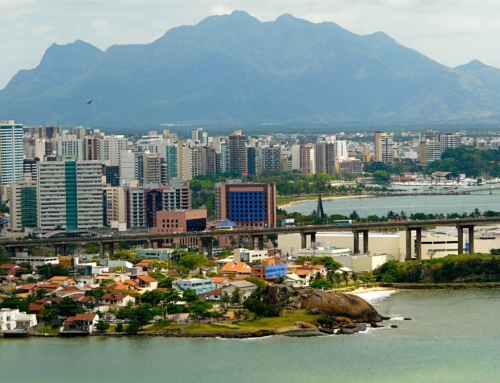To put my family at ease, I tend to downplay the more dangerous aspects of life in Brazil, but the truth is you’re much more likely to die a violent death in Brazil than in Canada or Japan or even gun-crazy United States. Oh, you’re not going to get shot. No, you’re going to die in a flaming car crash long before you get mixed up in drug-related violence.
It didn’t take me very long in Brazil to understand that cars were the real danger. After my first months in Rio, I assumed that traffic in Brazil was governed only by the laws of physics. I was wrong. It’s governed by plenty of people laws too. It is Brazil after all.
Licenses require medical exams, eye exams, and psychological exams. Driver’s ed is mandatory and its content federally regulated down to the number of hours for theory and practice. Thus, the only reasonable explanation for the number of traffic-related deaths here is that no bureaucrat in Brasilia has ever actually driven a car, and they have no idea what skills to include on the test.
A student of mine recently turned 18 and has been taking his mandatory driver’s ed class. He brought me several of his practice exams. He knows I love to laugh.
Driver’s education courses in Brazil are divided into two parts: 45 hours and 25 hours. That’s 45 hours in the classroom and 25 hours on the road. Some people might be thinking, “Gee, wouldn’t it be better is these kids learning to drive a car spent the majority of their class time in a car?” These people don’t appreciate the teaching power of multiple choice exams and visualizing your goal. “I can see myself successfully merging in rush hour traffic.” (Actually, visualizing is the only way to practice highway driving. Driver’s ed cars aren’t allowed on highways.)
So if not safe merging practices, what are these up and coming driver’s expected to know? For one, the best attitude man can have in relation to the environment. (The answer is “preservation”.) It’s also necessary to know how the government of Brazil is trying to reduce emissions. Humans have basic rights and there are a variety of ways we can observe the importance of family and friends to society. Know that pointing out to a fellow driver that one of her tires is low encourages solidarity and courtesy in society more so than it demonstrates a concern for traffic. Don’t worry about knowing the effects of alcohol on reflexes. That’s only a leading cause of traffic deaths in Brazil. It won’t be on the test.
Now, a 35 question multiple choice test isn’t the only requirement. The non-drivers in Brasilia didn’t want just anybody who can read getting a license. They also wanted to weed out the crazies, which is why a psychological exam is required. Again, I think this shows a complete lack of understanding of driving and a prejudice against crazy people. There’s no reason a person can’t be a sociopath and an excellent driver. My life experience has shown me no correlation between sanity and a willingness to use the blinker.
The greatest irony is that all these required (and expensive) exams and driver’s ed courses intended to make the roads safer actually result in a huge market for fake licenses. People need to drive and they don’t have 70 hours to spend learning about the parts of an engine.
In the end who ends up driving on Brazil’s roads? A bunch of unlicensed drivers who have no idea how rain affects a car’s ability to stop, a bunch of licensed drivers who can label all the parts of an engine but have never driven on a highway, and not a single person who knows anything about alcohol’s affects on the body.
So, if you’re coming to Brazil be sure to wear your seat belt. Or just stay on the beach the whole time. Cancer kills fewer people here than cars.







[…] The US is the highway system is one of my husband’s favorite things about the country. He longs to take a cross country trip in the US. By comparison, my husband avoids extended road trips in Brazil as if his life depended on it. (Statistically speaking it kind of does. Roads in Brazil are more dangerous than gangs.) […]